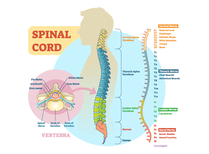 You may or may not already be a patient in my practice in Porter Ranch, CA. If you are a patient, you have seen my exam form where I noted the findings of your exam. The video below will dive into a deeper explanation of my notes on your exam form, so please watch it so that all the information stays fresh in your mind. If you are not a patient, I encourage you to continue reading and to watch the video below so that you know what to expect from a chiropractic exam in my office. The following are seven components of my chiropractic exam: VITAL SIGNS Vital signs such as your pulse, respiratory rate and temperature will tell me if you are a candidate for chiropractic care or if you need to be referred to another professional. It will give me a sense of your overall health. POSTURAL EXAM Your posture tells me a lot about you. During this part of the exam, I observe how you stand. I then manually check the levels of your pelvis, shoulders, head and their tilt. I’m also able to assess the muscle tone at these parts of the body. RANGE OF MOTION OF NECK AND SHOULDERS Range of motion exams help me differentiate between muscle issues and joint issues. I normally start at the neck where the patient bends the neck forward and back, also known as flexion/extension. This tells me about the health of the joints. Then I ask the patient to rotate the head from side to side and this tells me about the condition of the muscles in that area. Bending the neck from side to side, also known as lateral flexion, will tell me about both the joints and muscles. The range of motion test is done two ways, 1) you do it yourself and 2) the doctor does it for you. If the doctor is exerting the force to move the body, it is called passive range of motion. However if you are moving on your own, it is called active range of motion. This gives me a great deal of valuable information to tell if the issue is a muscle or joint disorder. Oftentimes, I will have to combine the range of motion tests for shoulder, neck and back with the postural, orthopedic and neurological tests to arrive at a more accurate diagnosis. PALPATION Also, known as the art of palpation, this test is designed for me to look for four things: misalignments, fixation of the joints, pain and spasms or muscle tone. This is the most important part of the chiropractic exam. During palpation, I will use my hands to palpate the joints and muscles of the head, neck, shoulders, spine, back and pelvis. When I palpate the joints, I’m looking for misalignments, which means a joint is out of place. I’m also looking for fixation, which means there is no movement in the joints. When I palpate the muscles I identify their tone, whether they are soft or stiff. I am also looking for spasms. All along the way, I am watchful for areas of pain. ORTHOPEDIC TESTS This series of tests are designed to test the muscles, nerves and joints. Each has a particular function. There are over 100 tests available. I obviously do not perform all of them in each exam. Depending on your health history, I will choose appropriate tests for your exam. For example, the Thoracic Outlet Syndrome test helps me diagnose circulation issues and the Straight Leg Raise test helps me diagnose muscle and joint issues of the low back specifically. Here are some tests that appear in your form: Shoulder Depression Test Foraminal Compression Test Thoracic Outlet Syndrome Test Straight Leg Raise Test Patrick Fabere Test If any of these tests are marked positive on your exam form you can do further research online to find out more about your condition. 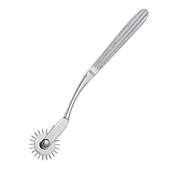 NEUROLOGICAL TEST The first step in the neurological test portion of the exam is called dermatome mapping. Using an instrument called a pinwheel, I check every part of the spine. I gently run the pinwheel on the skin. Although the test is painless, it does cause sensation. I am looking for sensation to be exactly the same on both sides of the body. Checking the sensory part of your nerves, tells us if there are interferences in your peripheral nerves closer to the spine. If one side is more sensitive than the other, that is a telling sign about the source of the nerve interference. If you have a history of numbness in your hands, feet or numbness that radiates from the back to the feet and ankles, it indicates a neurological problem such as a bulged disc. 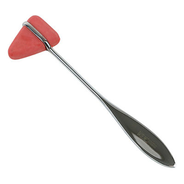 Lastly, I perform a reflex test. While the dermatome mapping checks for your peripheral nerves, the reflex test checks your spinal cord. The reflex test will show if there are any abnormalities in the cord and at which level the abnormalities exist. This test is crucial for any patient with suspected or confirmed bulged discs or space-occupying lesions in the spinal cord. The test will show how severe the condition is. I use a reflex hammer to tap the tendons and note the reaction. The reactions vary from normal to diminished to exaggerated or absent. An accurate diagnosis takes into account the results of all the tests, your health history as well as your own account of the symptoms. If you are a current patient, I encourage you to study your results by watching the video and reading your form, then come back to my office to discuss your treatment. Consider the following options in the meantime:
If you are looking for chiropractic care in the Los Angeles area and would like to schedule an appointment for a free exam, please call my office at 818-831-0100.
0 Comments
THE ROAD TO RECOVERY AND WELLNESS The most frequently asked question asked by my patients here at Soft Touch Chiropractic in Porter Ranch, CA is, “How often do I need to come back for adjustments?” I jokingly point to my belly and ask, “If I want to lose weight, how often should I exercise?” They always laugh and give me their estimation of what they think I should do. But the fundamental question is, “What is the goal? Or what am I trying to achieve? So I ask them the same question. Chiropractic empowers a person’s body to get the results they want. So in essence, you are in control of the consistency and frequency with which you get adjusted by your chiropractor. So the short answer to the question is: It’s your decision. The long answer is: It depends. In my practice, I give my patients three options to choose from and depending on how they answer, I will make recommendations for future care. Most of you who come to see me are in pain and your only goal is pain relief. This goal requires intensive care, sometimes daily visits. The next step is to get you through the improvement and recovery phase which includes home exercises and adjustments. Once you feel better you can choose to end chiropractic care, but without follow up, it’s possible that you’ll relapse after that and end up in my office again to manage the pain. We call this the Clinical Care Strategy because you come only when you have symptoms. If this is your case you might have marked the first choice on the form that says, “I have a specific concern and I require help only with this.” The next choice on the form is, “I want to ensure that my health concerns do not become an ongoing problem and that it will not impact my future.” If you marked this option then you have chosen Preventive Care, which is less intensive and less costly. Preventive care is designed to prevent relapse. The last option says, “I want to be healthier five years from today.” This means you want to invest in your future health. If you checked this box you have chosen Wellness Care. With this strategy, you’ll be treated more often than with Preventative Care because it’s not symptom oriented. With Wellness Care you can achieve goals like: retrain your muscles, improve your body’s biomechanics, keep your spine aligned and stable which is the most important part of chiropractic care, improve your range of motion, prevent exercise injuries, and basically be at your best. It’s important that you invest in your future health especially if you have others who depend on you. Regardless of what type of care you choose, we are here to help you and support you in your decision. If you are outside of the Los Angeles area of California, contact your local chiropractor and ask about their wellness strategies. If you are local to Los Angeles, contact us at 818-831-0100 to make an appointment for a free exam and first consultation. |
New Patient SpecialArchives
July 2024
Categories |

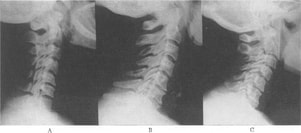
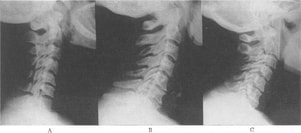
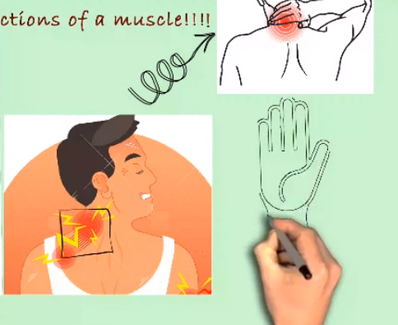
 RSS Feed
RSS Feed
